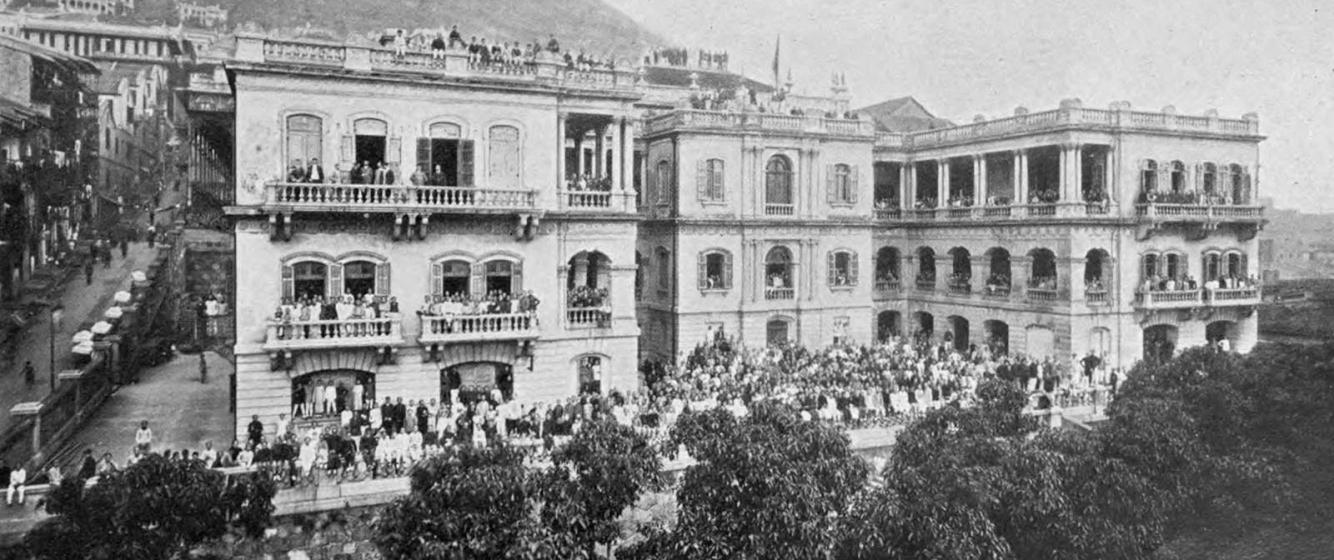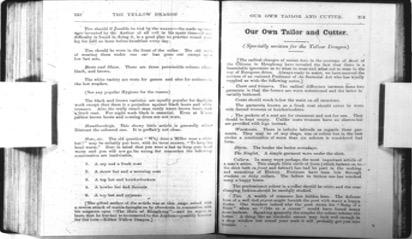
Social Distinction and Cultural Superiority: Elite Chinese and Anglo-Chinese Schools in Colonial Hong Kong, 1910s-1930s
Since the early 1910s, the colonial government of Hong Kong had begun to emphasise the promotion of Western culture in schools to counteract the growing political permeation of Republican China into the educational institutions of the colony. Under growing pressure from the government, Anglo-Chinese schools began to re-evaluate their pedagogy with a particular focus on Westernising the bodily representation of their Chinese students.
Fashion, manners, and etiquette of the students emerged as the top priority for schools to work on. To better show the changing bodily representation of the elite Chinese at Anglo-Chinese schools in early 20th-century Hong Kong, this essay takes the Government Central School, the first Anglo-Chinese school – established in 1862 – as a case study. It will first briefly show the initial fashion of the Chinese students at the school and detail how their fashion changed from the 1910s to the 1930s under the school’s cultural policies. It then explores how the students reimagined themselves as practitioners well-versed in Western culture by signalling their Western lifestyle and knowledge of western norms. It argues that with Western cultural training, the Anglophone Chinese created their own social world with a sense of cultural superiority through which they exhibited a new form of social identification distinct from their non-Anglophone counterparts in the colony.
The initial clothing of Chinese students in early colonial Hong Kong was predominantly Qing fashion, namely sam fu. While sam and fu – literally translated as the “upper garment” and the “trousers,” respectively – was the outfit most commonly worn by Chinese students in colonial Hong Kong, some Chinese students from well-off families would wear cheong-sam, literally meaning a “long upper garment.” So, when did the fashion change emerge among elite Chinese? Before the Xinhai Revolution broke out in 1911, revolutionary Dr. Kwan Sum-yin organised the “League of Cue-cutting-but-dress-remaining-unchanged” in 1909. While Dr. Kwan at first only requested that people cut their queue hairstyles, some rich Chinese elites emerged as the fashion pioneers of Western suit culture. However, these elite Chinese were no experts in Western fashion, and thus many Europeans relentlessly expressed criticism against elite Chinese and their comical and presumptuous fashion styles.
Facing Chinese unfamiliarity with suit culture, the Government Central School sought to educate their Chinese students on Western fashion, manners, and etiquette to prevent them from appearing as a laughing stock in the eyes of Europeans. A series of tutorial notes were supplied to the Yellow Dragon of 1911, which provides the students with cultural guidelines on how to look and act like an ‘authentic’ Westernised elite Chinese [Fig. 1].

This special column entitled “Our Own Tailor and Cutter” was specifically written to equip the Chinese students with knowledge of Western suit culture. The column states that the aim of publishing such a tutorial note on Western fashion was to facilitate the radical changes in the costume of the elite Chinese in Hong Kong after the establishment of the Republic of China. In the note, the author addressed five key areas of Western suit culture that students needed to pay more attention to: suit jackets and coats, shirts, ties, footwear, and accessories.
In 1913, the Republican government extended national influence to education in non-mainland-Chinese regions. For instance, the Commissioner of Education for Guangdong Province encouraged Chinese schools in Hong Kong to work closely with the Bureau of Education of the Republic of China. Facing the growth of Chinese intervention, both the colonial government and British authority in London became more concerned about educational affairs in Hong Kong. In 1913, the colonial government agreed to provide a more comprehensive Western-style education for Chinese students, seeking to exert stricter cultural influence in schools in order to prevent political permeation from China.
Under the new education policy, the Government Central School not only sought to improve Chinese students’ English proficiency, but also to transform them into authentic Westernised elites. The school officials first renovated the campus, adding a collection of portraits of three British sovereigns and former governors of the colony, seeking to erect a ‘wonder’ at the school to create a sense of British pride. More importantly, the school under the policy of bodily Westernisation began to set proper guidelines for students’ fashion, manners, and etiquette. The school also began to conduct regular inspections. It was believed that checking on students’ outfits as well as their knowledge of manners was a way to assess their capability of making sensible decisions regarding the right suit jacket, waistcoat, trousers, and accessories.
Under the cultural cultivation of the Government Central School, Chinese students fully acquired Western culture in their daily life. Historical films and pictures of the school in the 1920s and 1930s show the Westernised bodily representation of the students. While suits became their daily uniform at school and the dress code for private gatherings, the fashion became a symbol of Western cultural engagement through which Chinese students and alumni developed a sense of pride and superiority. With regards to adopting Western dressing as students, the history of the Anglophone Chinese has not only shown how Chinese students were progressively nurtured to be Westernised elites at school and how the students reimagined themselves as practitioners well-versed in Western culture by signalling their lifestyle and knowledge of Western norms. Additionally, and more importantly, it has also revealed how the Anglophone Chinese created their own social world with a sense of cultural superiority through their engagement in suit culture at school as a new form of social identification distinct from their non-Anglophone counterparts in the colony.
Katon Lee
Lecturer, Department of History, Hong Kong Baptist University
Add new comment